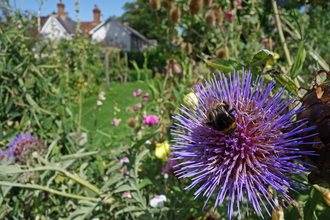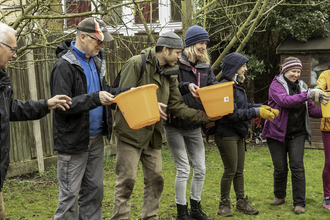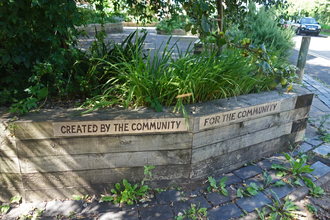I woke up last Saturday morning to snow! I’m going to confess that I am not a fan of snow; I know lots of people are but it just stops me from doing stuff I want to do, like going to the Saturday morning parkrun and meeting friends for a cuppa afterwards.
Making a difference...together
Ladybird by Adam Cormack
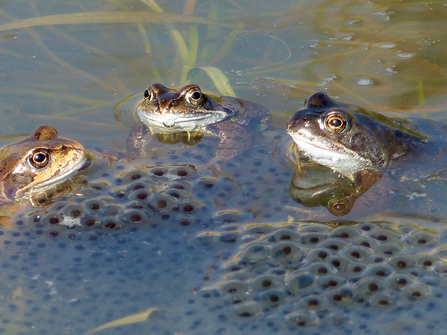
Frogs and spawn by Sarah Fowle
Anyway, I had a bit of a sulk and then I thought about the frogspawn in my little garden pond and wondered if any of it would survive. And then I thought about all the conversations I have had recently about signs of spring being early this year. It seems as though the snowdrops came and went so quickly and when I was at Monkwood recently, surveying visitors, I noticed a bright yellow butterfly flitting around the car park. So what is happening to the seasons and what does it mean? Dare I say the words ... climate change. The evening before the snow arrived, I went to a talk given by Chris Packham and it was both fascinating and depressing - so many species lost and, as Chris kept saying, on our watch!
The British Trust for Ornithology reports huge declines in the number of wild birds in Britain, witnessing a drop of 73 million since 1970. I can’t even begin to imagine what 73 million birds looks like, it’s just so many. A 2023 study showed that as many as 24% of Europe’s bumblebee species are now threatened with extinction, despite being worth a staggering £690 million per year to the UK economy alone. According to the latest UK State of Britain's hedgehogs report, numbers of hedgehogs have fallen by up to 30% in urban areas and 50% in rural areas since the Millennium.
The British Trust for Ornithology reports huge declines in the number of wild birds in Britain, witnessing a drop of 73 million since 1970. I can’t even begin to imagine what 73 million birds looks like...
It’s such a worry and nobody can make any major change and politicians don’t listen and everywhere is flooded or burning or or or and and and…. My worries and concerns are best described as eco-anxiety, the extreme worry about the current and future harm to the environment that's caused by human activity and climate change.
I don’t think it needs to be given a name to make it real but I find it scary and I see it in many people. It can lead to various responses, from complete apathy because we feel that we can’t do anything about it to climbing a gantry over a motorway and stopping traffic in the name of Just Stop Oil.
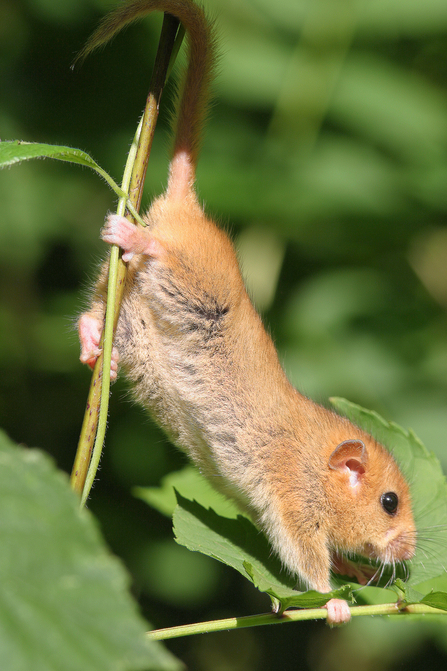
Dormouse by Ian Pratt
For me, though, I'm lucky. I'm part of a project at Monkwood nature reserve where we are working really hard to have a positive impact and influence on the fate of wildlife like hazel dormice and wood white butterflies. This is a small part of the Trust's work in Worcestershire and the goal of Wildlife Trusts nationally - a rapid delivery plan to protect and manage 30% of the land and sea for nature by 2030. It’s a tough deadline but necessary to address the issues affecting the wildlife around us.
Equally, though, we need to provide help for those suffering with eco-anxiety. The Trust isn't alone in trying to support and encourage people to join together to help nature. Friends of the Earth suggest that finding your place in a community can help with feelings of despair and anxiety - the shared belonging and concern can be a great support and working together towards tangible solutions can give a much greater sense of control in overwhelming circumstances.
This leads me to an interesting piece of work undertaken by the University of Derby that looks at how people connect to nature. ‘The human relationship with the rest of nature matters for our well-being, yet the climate and environment emergency shows that the human relationship with the rest of nature is broken.’
Their research suggests that there are five ways to help us connect (or reconnect) to nature:
- Senses - using our senses to tune into nature
- Emotion - tune into the positive emotions that nature gives us
- Beauty - simply noticing nature's beauty
- Meaning - understanding the meaning that nature brings into our lives
- Compassion - caring and taking action for nature
If you can find people in your community that are also showing compassion for wildlife and taking action for nature then you can feel more positive about the solutions we are looking for and create that sense of control that we are all seeking.
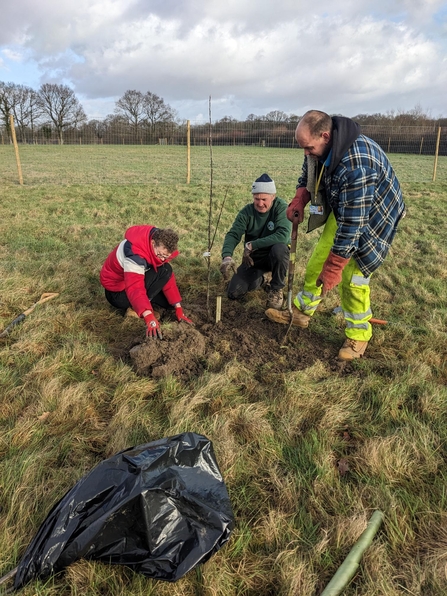
Apple tree planting with Wildgoose
My colleagues are working in communities through various projects, just like I'm doing as part of our work at Monkwood. I'm loving being able to create opportunities for people to engage with nature conservation in a positive way - schools and Scout groups planting hedging trees, volunteers managing areas for wildflowers and flying invertebrates, Wildgoose Rural Training planting apple trees and making hazel hurdles to protect them. All of these, alongside reserves officer Dom delivering a management plan, are supporting the vastly diverse species that choose Monkwood as their home. And it helps to overcome my own eco-anxiety. It allows me to connect with others, helping them to connect to nature and, together, we can make a difference.
I'd encourage you to spend some time exploring the five points above. Chris Packham’s opening line at his talk last week was about a moment when he was three or four years old and he was mesmerised by a ladybird crawling up his finger, then opening its beautiful wing case and flying away. Such a small start but it led to a life of commitment to the environment and its protection. All five points are captured right there in that moment. What is it about wildlife and nature that you love? Can you identify a ladybird moment?



